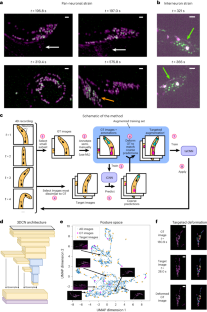2023-12-06 アリゾナ大学
◆研究によれば、特に新しい環境や場所の学習が難しい一部の高齢者において、記憶の問題は脳の記憶とナビゲーションに関連する領域である海馬に影響する可能性があります。この研究は、初期の認知症段階での記憶の衰退の程度を予測するのに役立つ可能性があるとされています。研究は、仮想現実の実験を通じて、海馬の神経信号をスキャンし、環境の特定の特徴を正確に表現するための神経信号の質に影響を与える要因を明らかにしました。
<関連情報>
- https://news.arizona.edu/story/why-do-some-older-adults-show-declines-their-spatial-memory
- https://www.pnas.org/doi/10.1073/pnas.2307884120
新しい空間学習への海馬の寄与は年齢に関連するものと年齢に依存しないものがある Hippocampal contributions to novel spatial learning are both age-related and age-invariant
Li Zheng, Zhiyao Gao, Stephanie Doner, Alexis Oyao, Martha Forloines, Matthew D. Grilli, Carol A. Barnes, and Arne D. Ekstrom
Proceedings of the National Academy of Sciences Published:December 6, 2023
DOI:https://doi.org/10.1073/pnas.2307884120
Significance
Spatial memory declines with age, although some older adults show little cognitive decline, even into their 80s. One important lead for age-related changes comes from electrophysiological studies of older rats, who have less stable neural representations for a spatial environment, termed “place cells.” Using high-resolution fMRI (functional MRI) targeting the human hippocampus, we demonstrate that older adults also have less stable neural representations within the same environment. Our results reveal, however, that there are both age and performance dependent differences driving these effects. While older adults, on average, showed alterations in information flow within the hippocampal circuit, better performing individuals showed more differentiated neural representations regardless of age. Together, these findings provide insight into the impact of age on spatial memory.
Abstract
Older adults show declines in spatial memory, although the extent of these alterations is not uniform across the healthy older population. Here, we investigate the stability of neural representations for the same and different spatial environments in a sample of younger and older adults using high-resolution functional MRI of the medial temporal lobes. Older adults showed, on average, lower neural pattern similarity for retrieving the same environment and more variable neural patterns compared to young adults. We also found a positive association between spatial distance discrimination and the distinctiveness of neural patterns between environments. Our analyses suggested that one source for this association was the extent of informational connectivity to CA1 from other subfields, which was dependent on age, while another source was the fidelity of signals within CA1 itself, which was independent of age. Together, our findings suggest both age-dependent and independent neural contributions to spatial memory performance.



